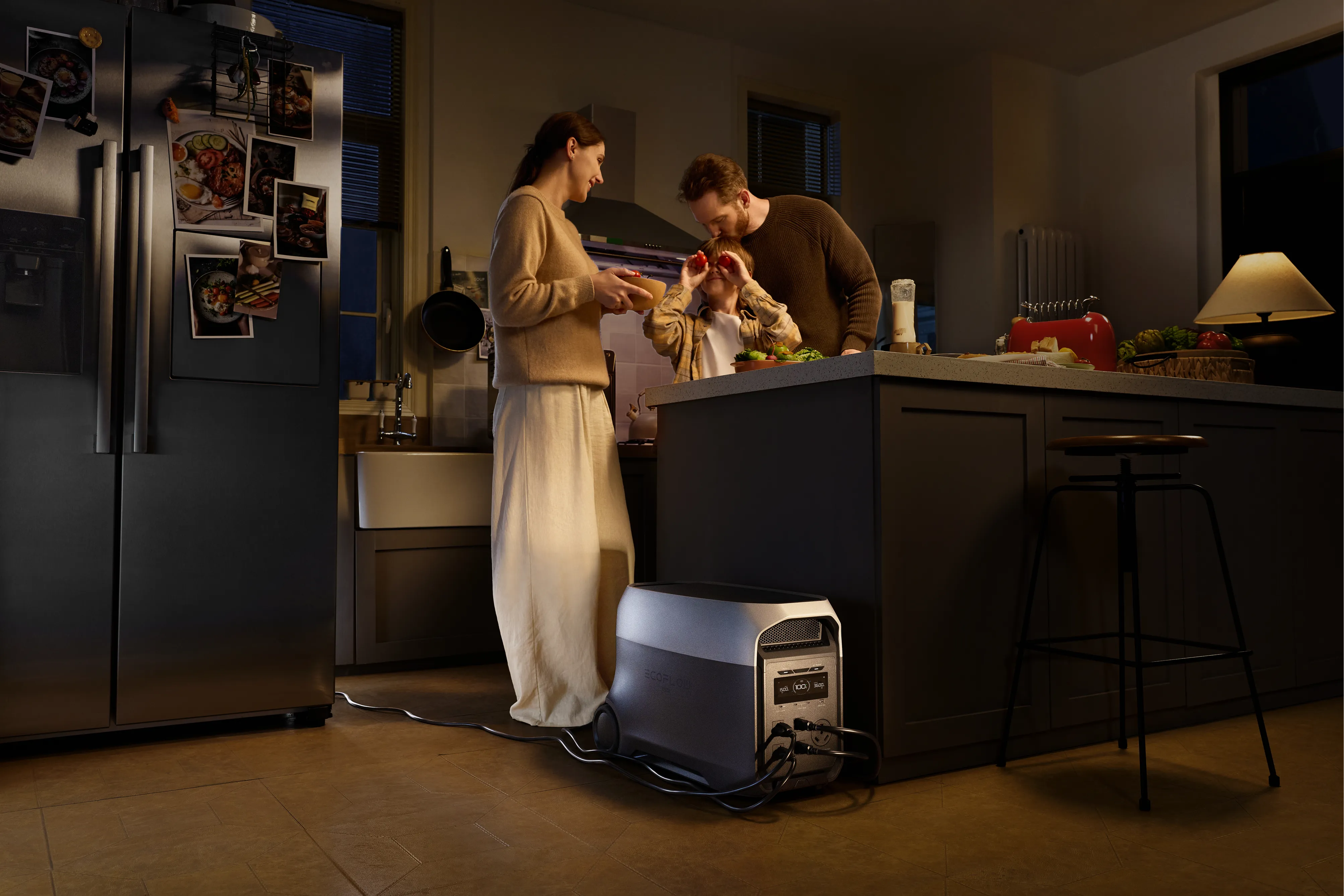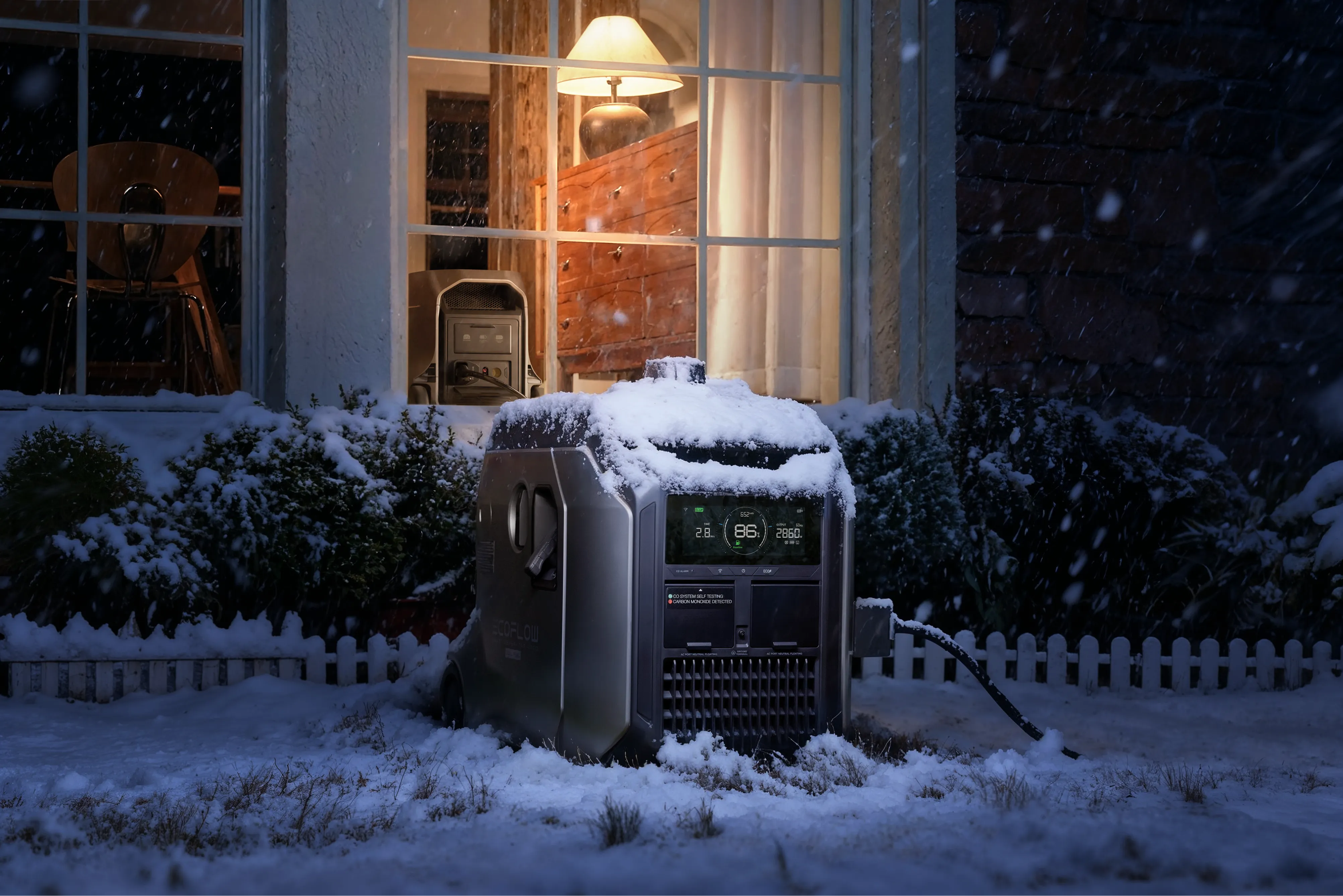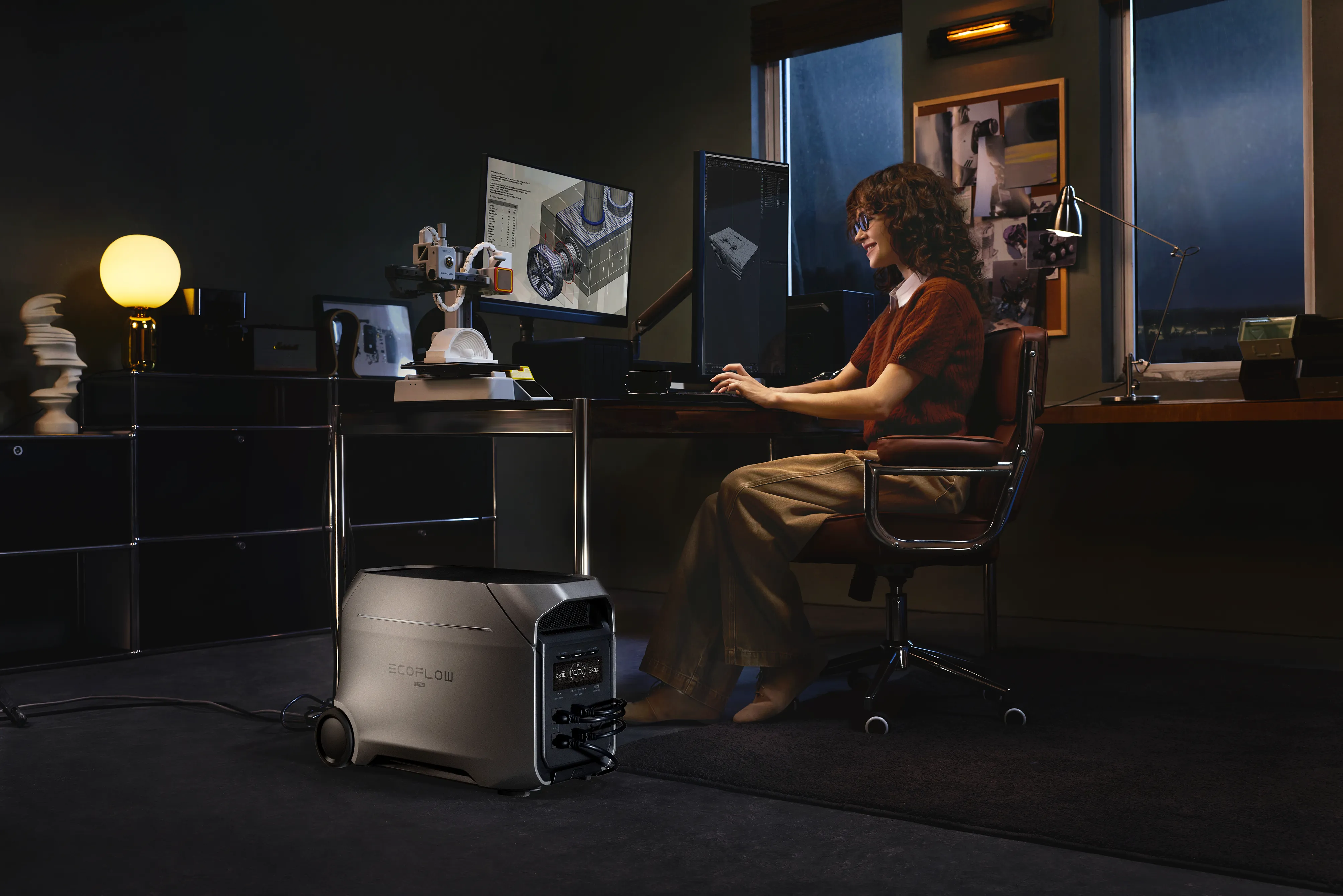- Understanding Power Surge Strips and Why They Matter
- UPS vs Surge Protector vs Power Strip: Which One Do You Really Need?
- How to Choose the Best Surge Protector for Home and Office
- Key Features That Define the Best Power Surge Strips
- Protecting High-Power Home Electronics from Voltage Spikes
- Conclusion
- FAQ
How to Choose the Best Power Surge Strips for Your Home Electronics
- Understanding Power Surge Strips and Why They Matter
- UPS vs Surge Protector vs Power Strip: Which One Do You Really Need?
- How to Choose the Best Surge Protector for Home and Office
- Key Features That Define the Best Power Surge Strips
- Protecting High-Power Home Electronics from Voltage Spikes
- Conclusion
- FAQ
In today’s homes, whether you’re plugged into the tech scene of Vancouver or streaming from Toronto, you’re surrounded by expensive electronics, from smart TVs and gaming PCs to advanced kitchen appliances. A sudden power spike, perhaps triggered by a summer thunderstorm over the Prairies or a grid hiccup during winter, can wipe out that investment in seconds. Choosing the right power surge strip isn’t just about adding more outlets, it's about introducing a vital layer of protection. This guide will walk you through everything you need to know to select top tier surge protection for your home and office equipment.
Understanding Power Surge Strips and Why They Matter
Many homeowners mistakenly believe a basic power strip provides surge protection, a costly misconception that can leave thousands of dollars’ worth of electronics at risk. Before choosing the right protection, it’s important to understand how these devices work and what truly makes a surge protector effective.
What Is a Power Surge Strip and How Does It Work?
A power surge strip is more than just a convenient way to add extra outlets, it’s an essential safeguard for your electronics. Designed to plug directly into a wall outlet, it allows multiple devices to draw power while incorporating built in surge protection. The “surge” function relies on components called Metal Oxide Varistors (MOVs), which detect sudden increases in voltage. When a power spike occurs, such as during a lightning strike or grid fluctuation, the MOV immediately redirects the excess energy into the strip’s grounding wire. This quick response prevents the surge from reaching your connected devices, protecting them from damage and ensuring your valuable electronics stay safe even during unexpected electrical disturbances.
The Difference Between a Power Strip and a Surge Protector
The difference between a power strip and a surge protector may seem small, but it’s crucial for protecting your electronics. A basic power strip is simply an extension cord with multiple outlets, it provides convenience, not protection. It allows several devices to plug into one source but offers no defense against sudden voltage spikes. A surge protector, on the other hand, is equipped with Metal Oxide Varistors (MOVs) and specialized circuitry that absorb and divert excess electrical energy before it reaches your devices. The easiest way to tell them apart is by checking the packaging for a joule rating. If no joule rating is listed, it’s a standard power strip, not a true surge protector.
Common Surge Protector Examples for Modern Homes
Modern surge protection solutions come in several forms to fit different household needs across Canada:
Standard Plug-In Strips: Ideal for entertainment centers, computers, and general electronics.
Wall-Mount Protectors: Plug directly into wall outlets, perfect for kitchen appliances, bedside chargers, or compact spaces.
Coaxial and Ethernet Protectors: Designed to protect devices connected through phone lines, cable TV, or network cables, as power surges can travel through these connections too.
UPS vs Surge Protector vs Power Strip: Which One Do You Really Need?
Choosing between a UPS, surge protector, and basic power strip depends on how critical your devices are and how much protection they need. A desk lamp in Vancouver doesn’t require the same level of defense as a gaming PC in Montreal. Here’s how to decide which option fits best.
When to Use a Basic Power Strip for Everyday Devices
A basic power strip works well for simple, non-sensitive electronics that don’t rely on consistent voltage or store data. Everyday items like desk lamps, floor lights, or chargers for small personal devices can be safely used with one. However, avoid connecting high current appliances such as heaters or hair dryers, as they can overload the strip. For these low risk items, the main benefit is convenience, adding extra outlets where you need them, without the cost of advanced surge protection.


Why Surge Protectors Offer Better Safety for Home Electronics
Any device that contains sensitive circuits, stores important data, or is costly to replace should always be plugged into a surge protector. This includes televisions, gaming consoles, computers, routers, modems, and smart home systems. Surge protectors act as the first line of defense, absorbing sudden voltage spikes and preventing them from damaging delicate components. Investing in a quality surge protector is a simple, affordable way to extend the lifespan of your electronics and avoid costly replacements.
When to Choose a UPS System for Backup and Stability
An Uninterruptible Power Supply (UPS) offers the highest level of protection by combining surge defense with temporary power backup. It’s essential for devices that cannot afford sudden shutdowns, like computers, servers, or medical equipment. When the power cuts out, the UPS’s internal battery activates instantly, keeping your equipment running long enough to save files or perform a safe shutdown. This seamless transition helps prevent data loss, equipment damage, and costly downtime during unexpected outages.
A UPS is Best For:
Gaming PCs and Workstations: Prevents corrupted files and loss of unsaved progress during outages.
Critical Network Equipment: Keeps your Wi-Fi, modem, and home security systems operational when the power goes out.
Medical Equipment (e.g., CPAP machines): Ensures uninterrupted operation where consistent power is vital.
While surge protectors defend against sudden voltage spikes, a UPS not only provides that same protection but also supplies temporary power during blackouts, ensuring stability, safety, and peace of mind.
How to Choose the Best Surge Protector for Home and Office
Selecting the right surge protector goes far beyond counting outlets, it’s about choosing one with the right technical specs to safeguard your valuable electronics. Key details like joule rating, response time, and noise filtration determine whether your devices survive a surge or sustain serious damage.
Check Joule Rating and Response Time for Maximum Protection
When selecting a surge protector, pay close attention to its joule rating and response time, these determine how effectively it shields your devices. The joule rating measures how much energy the protector can absorb before it wears out, while response time indicates how quickly it reacts to a surge. Higher ratings and faster response times mean stronger protection for sensitive electronics like TVs, computers, routers, and smart devices. A quality surge protector absorbs the surge’s initial energy spike instantly, preventing harmful voltage from ever reaching your valuable equipment.
Look for Outlets with EMI/RFI Noise Filtering
Even when no major surge occurs, electrical interference, known as EMI (Electromagnetic Interference) or RFI (Radio Frequency Interference), can slowly wear down your electronics and affect performance. High quality surge protectors with built-in EMI/RFI filters help “clean” the power supply, delivering a smoother and more stable current to your devices. This feature is especially valuable for home theaters, studio equipment, and gaming PCs, where signal clarity and consistent performance are essential.
Safety Certifications and Warranty Coverage Matter
When it comes to electrical safety, certification is non-negotiable. In Canada, always choose surge protectors that carry cUL or cETL marks, which verify that the product meets strict national safety standards. Beyond certification, reputable manufacturers often include an Equipment Protection Warranty, guaranteeing repair or replacement of connected devices if the surge protector fails. This type of warranty not only adds peace of mind but also reflects the manufacturer’s confidence in the quality and reliability of their product.
Placement Tips for the Best Surge Protector for Gaming PC
Proper placement is key to maximizing your surge protector’s effectiveness. For high performance devices like gaming PCs or editing workstations, always plug the surge protector directly into a grounded wall outlet, never daisy-chain it through another strip or extension cord. Choose a model with widely spaced outlets to fit bulky power adapters and ensure that indicator lights are visible and easy to check. Keeping your surge protector accessible also allows for quick maintenance or replacement if protection indicators show it’s time for an upgrade.


Key Features That Define the Best Power Surge Strips
Modern surge strips do more than just protect against electrical spikes, they combine safety, functionality, and convenience to support the wide variety of electronics in today’s homes.
Number and Type of Outlets for Different Devices
When choosing a surge strip, consider both the number of outlets and their spacing.
High Outlet Count: Look for 6 to 12 outlets to accommodate a full home setup.
Widely Spaced Outlets: Prevent bulky adapters (“wall warts”) from blocking adjacent sockets.
Sliding Safety Covers: Ideal for households with children, keeping unused sockets safely covered.
Energy Efficiency and Smart Power Management
Advanced surge protectors now come equipped with smart energy saving technology that helps cut unnecessary power consumption. These intelligent “smart” strips can assign a master outlet, such as your computer and automatically shut off power to connected peripheral devices like monitors, printers, or speakers when the main device is turned off. By eliminating this “phantom load,” these surge protectors not only extend the life of your electronics but also help lower your household’s overall energy costs.
Built-in USB and USB-C Ports for Modern Gadgets
Today’s best surge protectors cater to the growing number of devices that charge via USB. Models with built in high speed USB-A and USB-C (Power Delivery) ports let you charge smartphones, tablets, and other portable gadgets directly, without needing bulky adapters. This not only saves outlet space but also ensures your smaller devices receive the same level of surge protection as your larger electronics.
Wall-Mount or Desktop Design for Flexibility
The design of your surge protector plays a big role in convenience and organization. Desktop strips feature flat or rectangular designs that sit neatly on a desk or media console, providing easy access to outlets for frequently used devices. Wall mount surge protectors, on the other hand, plug directly into the outlet and sit flush against the wall, ideal for saving floor space and keeping cables cleanly managed in tighter areas like kitchens, offices, or entertainment setups.
Protecting High-Power Home Electronics from Voltage Spikes
For Canadian households that rely on powerful appliances and smart tech, and that routinely deal with ice storms, Chinooks, and summer heat domes, a one-layer defence simply isn’t enough. To keep your investment safe, you need both good surge protection at the outlet and a stable whole-home battery backup behind it, so your gear is shielded whether the grid hiccups, sags, or cuts out completely.
Understanding Surge Risks for Appliances and Smart Homes
High draw appliances with built in electronics are especially vulnerable to sudden voltage spikes. Think smart fridges, modern washing machines, heat pumps, and Wi-Fi enabled thermostats. They run for long periods and rely on sensitive control boards that can be fried in an instant by a surge, turning an everyday flicker into a four figure repair bill. For these circuits, it’s worth using a surge protector with a high joule rating dedicated to major appliances or smart home hubs.
Combining Surge Protectors with Home Backup Power Systems
If your home depends on equipment like a gaming PC, home server, medical device, or intelligent refrigerator, the best approach is to pair quality surge strips with a reliable backup power system. The surge strip handles smaller spikes, while the backup system steps in when the grid drops out or becomes unstable.
The EcoFlow DELTA 3 Ultra Plus (3072Wh) is a strong option for this kind of setup. Its large capacity and steady AC output can keep key loads running while also smoothing out fluctuations and outages. When the power wobbles or fails, it can immediately supply clean, regulated electricity, helping to protect sensitive electronics and essential appliances through Canada’s unpredictable weather.
Best Practices for Long-Term Surge Protection Maintenance
Surge protectors quietly wear out over time, even if they still “look” fine. The internal MOVs sacrifice themselves a little with each surge they absorb, so ongoing maintenance really matters:
Monitor the indicator light
Most good strips include a “Protected” or “Protection On” light. If that light goes out, the outlets may still work, but the surge protection is done. Replace the strip as soon as that happens.
Replace after major electrical events
Following a close lightning strike, major grid fault, or serious brownout, it’s wise to swap out your surge protectors, even if the indicator still shows protection. A big hit can use up most of their remaining capacity in one shot.
Inspect annually
Once a year, give each strip a quick check. Look for frayed cords, scorch marks, cracks, or discolouration on the housing or plug. Any visible damage is a sign to retire it and bring in a new unit before it fails when you need it most.


Conclusion
Choosing the best power surge strip may seem like a small decision, but it plays a major role in protecting your expensive home electronics from sudden voltage spikes and grid instability. By understanding the difference between a simple power strip and a true surge protector, prioritizing a high joule rating, and investing in quality devices with proper certifications, you’re safeguarding both your equipment and your peace of mind. Pairing your setup with a dependable portable power station like the EcoFlow DELTA 3 Ultra Plus adds an extra layer of security, ensuring your devices remain powered and protected during unpredictable weather or outages. In a country like Canada, where storms, ice, and heatwaves can all strike unexpectedly, taking these steps ensures your home stays safe, efficient, and always connected.
FAQ
What’s the main difference between a power strip and a surge protector?
A power strip simply expands the number of available outlets from one wall socket, it’s convenient but offers no defense against electrical spikes. A surge protector, however, includes internal components such as Metal Oxide Varistors (MOVs) that detect and redirect excess voltage away from your devices during a surge. To ensure real protection, always check for a joule rating on the label, if it doesn’t have one, it’s just a basic power strip.
How many joules should a surge protector have for home use?
For everyday home electronics, like TVs, routers, and computers, a minimum of 1,500 to 2,000 joules is recommended to ensure solid protection. If you’re safeguarding high-end devices such as gaming PCs, professional workstations, or home theatre systems, opt for 2,500 joules or higher. The higher the joule rating, the more energy the surge protector can absorb over its lifetime, giving your equipment stronger and longer lasting defense.
Is a UPS better than a surge protector for computers?
Yes, a UPS (Uninterruptible Power Supply) is a better choice for computers because it does more than just absorb voltage spikes, it also provides battery backup power. This means that if the electricity cuts out, your computer stays on short but enough for you to save your work and shut down safely, preventing data loss or hardware damage. A standard surge protector, on the other hand, only guards against sudden power surges but offers no protection during a full outage.
What is the best surge protector for a gaming PC in Canada?
For a gaming PC in Canada, choose a surge protector rated 2,500+ joules with EMI/RFI noise filtering, a low clamping voltage, and a connected equipment warranty. Make sure it’s cUL or cETL certified for Canadian safety standards and avoid daisy-chaining strips. For the highest assurance, especially with our weather and grid blips, pair your rig with a high capacity UPS (e.g., the EcoFlow DELTA series) to add battery backup, cleaner power, and safe shutdown during outages.